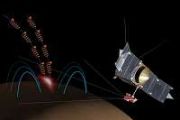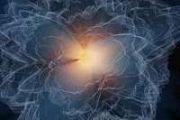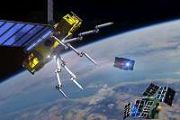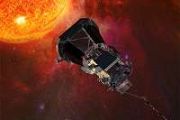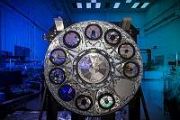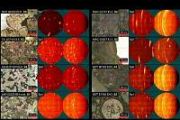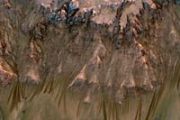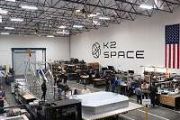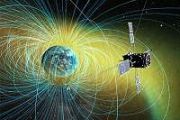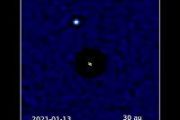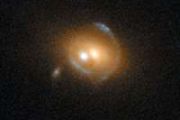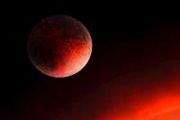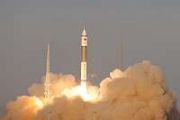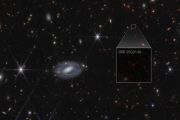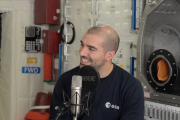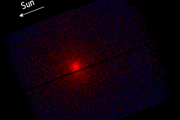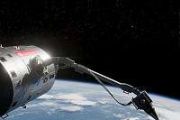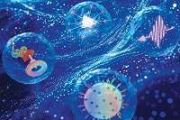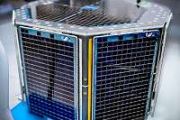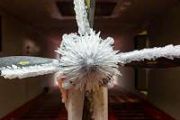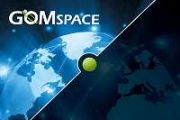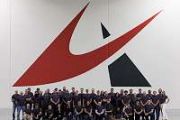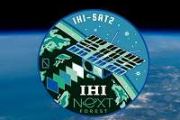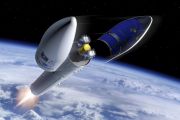
Copernical Team
Airbus Ventures leads Solestial's oversubscribed $10M seed round
Slovakia becomes ESA Associate Member state
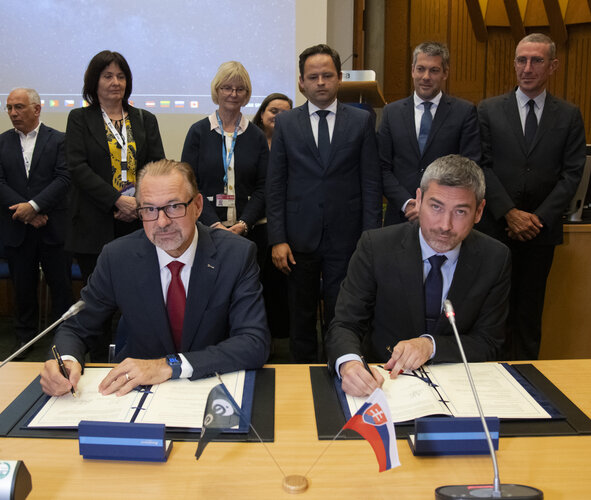
Following its unanimous approval by ESA Council on 17 March, the Association Agreement between ESA and the Slovak Republic was signed on 14 June at ESA ESTEC in Noordwijk, The Netherlands.
Mars and Jupiter moons meet
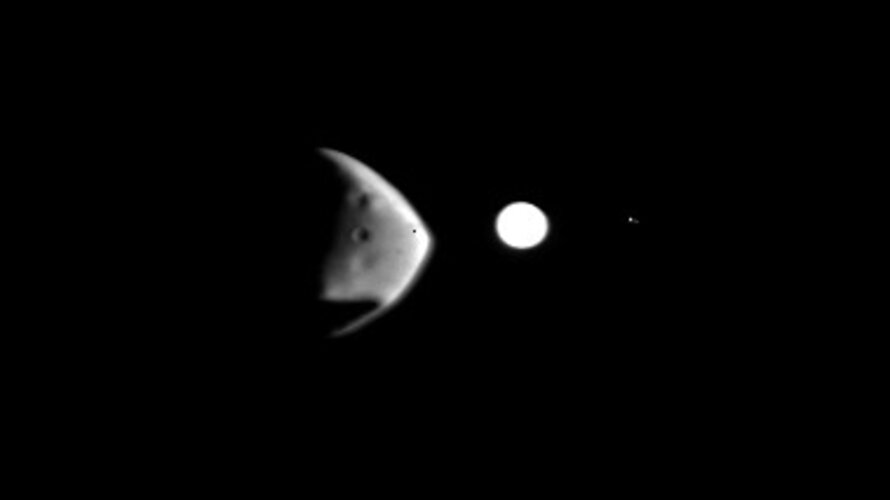
ESA’s Mars Express has captured the rare moment of Mars’ small moon Deimos passing in front of Jupiter and its four largest moons – the focus of ESA’s upcoming Jupiter Icy Moons Explorer launching next year. Celestial alignments like these enable a more precise determination of the martian moons’ orbits.
NASA study suggests shallow lakes in Europa's icy crust could erupt
 New research makes hypotheses that NASA's Europa Clipper can test: Any plumes or volcanic activity at the Jovian moon's surface are caused by shallow lakes in its icy crust.
In the search for life beyond Earth, subsurface bodies of water in our outer solar system are some of the most important targets. That's why NASA is sending the Europa Clipper spacecraft to Jupiter's moon Europa: There
New research makes hypotheses that NASA's Europa Clipper can test: Any plumes or volcanic activity at the Jovian moon's surface are caused by shallow lakes in its icy crust.
In the search for life beyond Earth, subsurface bodies of water in our outer solar system are some of the most important targets. That's why NASA is sending the Europa Clipper spacecraft to Jupiter's moon Europa: There Sharpest Earth-based images of Europa and Ganymede reveal their icy landscape
 The cocktail of chemicals that make up the frozen surfaces on two of Jupiter's largest moons are revealed in the most detailed images ever taken of them by a telescope on Earth.
Planetary scientists from the University of Leicester's School of Physics and Astronomy have unveiled new images of Europa and Ganymede, two future destinations for exciting new missions to the Jovian system.
The cocktail of chemicals that make up the frozen surfaces on two of Jupiter's largest moons are revealed in the most detailed images ever taken of them by a telescope on Earth.
Planetary scientists from the University of Leicester's School of Physics and Astronomy have unveiled new images of Europa and Ganymede, two future destinations for exciting new missions to the Jovian system. NASA confirms DART impact changed asteroid's motion in space
 Analysis of data obtained over the past two weeks by NASA's Double Asteroid Redirection Test (DART) investigation team shows the spacecraft's kinetic impact with its target asteroid, Dimorphos, successfully altered the asteroid's orbit. This marks humanity's first time purposely changing the motion of a celestial object and the first full-scale demonstration of asteroid deflection technology.
Analysis of data obtained over the past two weeks by NASA's Double Asteroid Redirection Test (DART) investigation team shows the spacecraft's kinetic impact with its target asteroid, Dimorphos, successfully altered the asteroid's orbit. This marks humanity's first time purposely changing the motion of a celestial object and the first full-scale demonstration of asteroid deflection technology. Sols 3621-3622: Planetary Power Puzzle
 This morning's planning kicked off with great news! Our Sol 3620 SAM data of the Canaima drill sample was interesting enough to proceed with planning a Gas Chromatograph Mass Spectrometry (GCMS) experiment. This type of activity is one of SAM's specialties and can help characterize the chemistry of the rock we're parked in front of, including the presence of compounds essential to life as we kno
This morning's planning kicked off with great news! Our Sol 3620 SAM data of the Canaima drill sample was interesting enough to proceed with planning a Gas Chromatograph Mass Spectrometry (GCMS) experiment. This type of activity is one of SAM's specialties and can help characterize the chemistry of the rock we're parked in front of, including the presence of compounds essential to life as we kno Thirty thousands near-Earth asteroids discovered and rising
 We have now discovered 30 039 near-Earth asteroids in the Solar System - rocky bodies orbiting the Sun on a path that brings them close to Earth's orbit. The majority of these were discovered in the last decade, showing how our ability to detect potentially risky asteroids is rapidly improving.
An asteroid is called a near-Earth asteroid (NEA) when its trajectory brings it within 1.3 Astro
We have now discovered 30 039 near-Earth asteroids in the Solar System - rocky bodies orbiting the Sun on a path that brings them close to Earth's orbit. The majority of these were discovered in the last decade, showing how our ability to detect potentially risky asteroids is rapidly improving.
An asteroid is called a near-Earth asteroid (NEA) when its trajectory brings it within 1.3 Astro The distance to the Moon and the length of the day 2.46 billion years ago
 At a slow pace, the Moon is moving away from the Earth and the Earth is rotating more slowly around its axis. To say something about these changes in the distant past, geologists use information stored in rocks and fossils. But the further back in time they look, the more difficult it becomes to retrieve this information. An international team of earth scientists has now managed to accurately de
At a slow pace, the Moon is moving away from the Earth and the Earth is rotating more slowly around its axis. To say something about these changes in the distant past, geologists use information stored in rocks and fossils. But the further back in time they look, the more difficult it becomes to retrieve this information. An international team of earth scientists has now managed to accurately de Virgin Orbit, Spire Global sign multilaunch agreement
 Building on their shared record for successful collaboration in responsive space, Spire Global, Inc. (NYSE: SPIR), a global provider of space-based data, analytics and space services, has entered a binding Launch Service Agreement with leading launch provider, Virgin Orbit (Nasdaq: VORB), to purchase multiple launches over several years. The first launch is expected to take place in 2023.
Building on their shared record for successful collaboration in responsive space, Spire Global, Inc. (NYSE: SPIR), a global provider of space-based data, analytics and space services, has entered a binding Launch Service Agreement with leading launch provider, Virgin Orbit (Nasdaq: VORB), to purchase multiple launches over several years. The first launch is expected to take place in 2023. 

